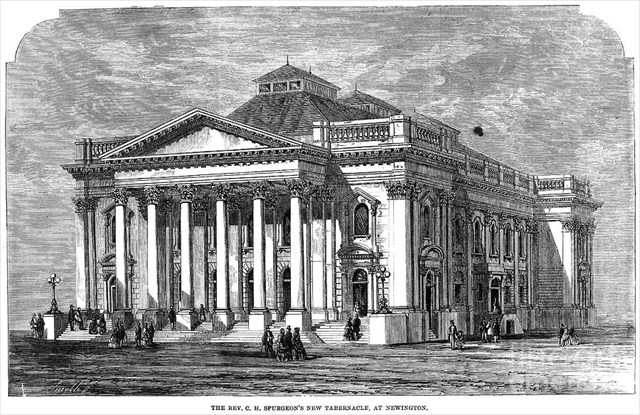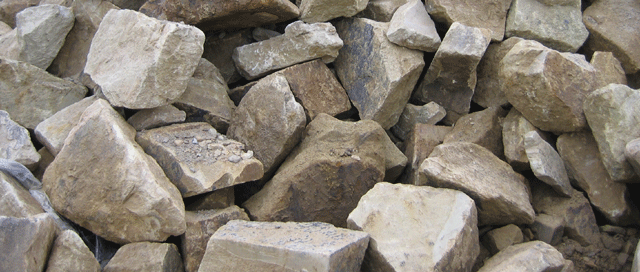The Metropolitan Tabernacle is a large Reformed Baptist church in the Elephant and Castle in London. The first stone was laid by Sir Samuel Morton Peto in August, 1859. It was the largest church edifice of its day in 1861. The edifice, which is upwards of 140 feet long, 80 feet broad, and 60 feet high, is approached at the eastern end by a flight of steps which extend the whole width of the building. The Tabernacle Fellowship have been worshipping together since 1650, soon after the sailing of the Pilgrim Fathers. Its first pastor was William Rider.

The original building was burned down in 1898, leaving just the front portico and basement intact, before the rebuilt church was destroyed again in 1941 during the German bombing of London in World War II. Once again, the portico and basement survived and in 1957, the Tabernacle was rebuilt to a new but much smaller design accommodating surviving original features. Th original building could house 5000 people seated with 1000 standing.
Kentish Ragstone
Kentish ragstone is a hard grey limestone in Kent, England, drawn from the geological formation known as the Hythe Beds of the Lower Greensand. For centuries it has been quarried for use both locally and farther afield.
Geology
Ragstone occurs in a geological formation known in the Hythe Beds of the Lower Greensand, a layer of limestones running from Kent into Surrey which was laid down in the Cretaceous period. It outcrops in various places, notably at the cliffs of Hythe, Kent (whence it gets its name) and along the Greensand Ridge above the Weald of Kent. Ragstone occurs in bands between 15 cm and 60 cm thick, alternating with bands of a loose material called Hassock. These bands are of similar thickness and the difference in colour between them gives quarry faces a striped appearance. When the stone is extracted from the quarry, it appears to be of a grey green or blue grey colour but later weathers to an autumnal hue which, together with its hard-wearing properties, traditionally made it an attractive material for public building works.
From 1066, the Normans constructed a large number of public buildings using ragstone, such as Westminster Abbey and theTower of London, castles such as Rochester and Leeds, and churches such as All Saints and the Holy Cross churches in Maidstone. Other examples in Kent include the keep at Dover Castle, Westgate in Canterbury, Knole House, Ightham Mote, the Archbishop's Palace, Maidstone and Maidstone Prison.
Only two ragstone quarries are operational in Kent, the Hermitage Quarry in Barming and Blaise Farm near King's Hill, but there are plans to extend the former quarry into Oaken Wood, Ditton. Although the Hermitage Quarry continues to meet the traditional demand for building stone for use in modern buildings, this is on a reduced scale from the past. Modern demand is busy and diverse, however, with about 60 different products being required for use in the ready mix concrete, road building and engineering industries. Larger blocks of ragstone are also used in the construction of sea barriers against coastal erosion.

The Cache:
1. How long ago was the Cretacious period?
2. Describe the texture and colour of the pillars. Why is the colour different to when the stone is first quarried?
3. Over time what is the enemy of stone buildings?
4. Are the stone pillars each made of one piece of stone? or many pieces? What is the reasoning to your answer?
5. How tall are the pillars? Please estimate.
6. At the base of the pillar on the right (when facing the church) there is some man made damage. What has caused the damage? Would the same damage have been caused if the stone was made of Granite?
7. Which stone is the hardest of building materials? Granite or Ragstone?
Optional:
8. Post a photo of yourself by one of the pillars.
p align='center'> ****************** ********************
For full information on how you can expand the Church Micro series by sadexploration please read the Place your own Church Micro page before you contact him at churchmicro@gmail.com.
See also the Church Micro Statistics and Home pages for further information about the series.
****************** *******************
Thanks for visiting the Earthcache.